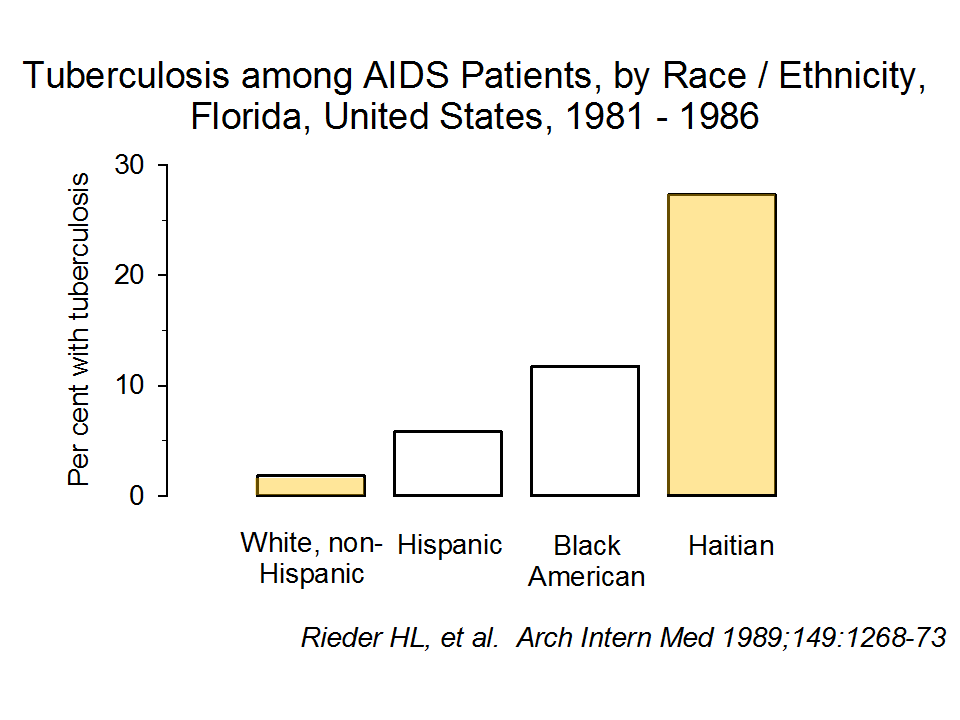 |
|
| |
|
|
| Slide |
105 |
Epidemiologic Basis of Tuberculosis Control |
 |
Next |
 |
 |
Previous |
 |
First |
 |
Last |
Early in the AIDS epidemic in the United States, and before the surveillance definition of AIDS included tuberculosis as an indicator disease, a State-wide retrospective study was conducted in Florida.
All patients known to have AIDS in Florida were matched against the State's tuberculosis register to identify all among these patients who also had (or had had) tuberculosis.
Before you continue, you might consider why such large differences were found between these four different groups of patients shown above.
As only persons infected with M tuberculosis are at risk of developing tuberculosis, and the prevalence of infection with M tuberculosis is low in the white, non-Hispanic population of the Untied States, it is not surprising that the proportion of AIDS patients in this group who also had tuberculosis was fairly low. In contrast, Haitians who came mostly as refugees to Florida had already a high prevalence of infection with M tuberculosis as a result of the epidemiologic situation in their home country. It is thus not surprising that a large proportion of them would also develop tuberculosis once their HIV infection had progressed to AIDS (no antiretroviral treatment was available at that time). |
| |
|
Go to top
Last update:
September 10, 2010